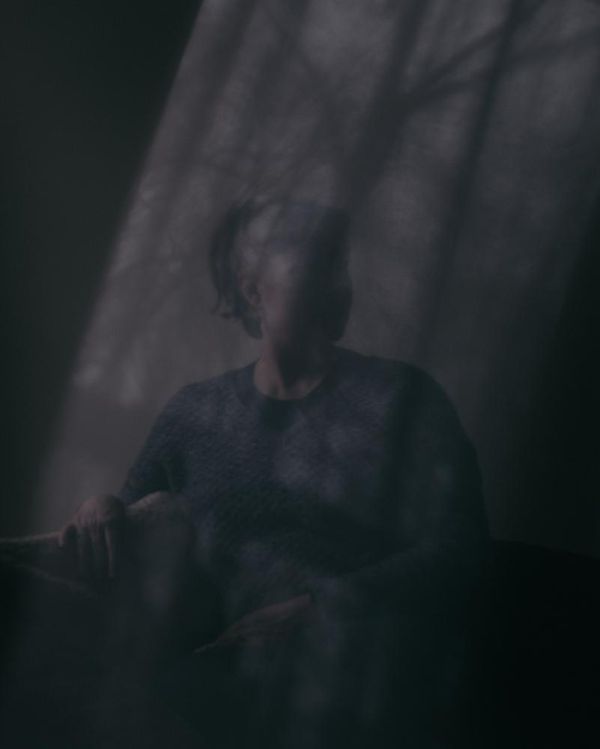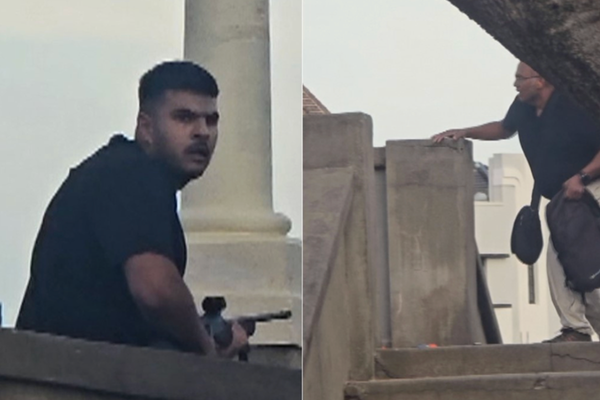
On a table in a study room at the new V&A East Storehouse, a silk-embroidered Alexander McQueen dress decorated with Hieronymus Bosch paintings has been laid out for me to see intimately. Creatures from The Garden of Earthly Delights cavort and gurn in my face, including a bird monster perched on a high stool that defecates out sinners. Ah, the privileges of a critic – except it isn’t my special experience at all. This opportunity for a personal encounter with an exquisite object is available to everyone and anyone, free of charge, as part of this unprecedented reinvention of the Victoria & Albert Museum that is V&A East Storehouse. It isn’t even difficult to arrange. All you do is look up the collection online and, if an object is in the Storehouse, you add it to your cart of up to five treasures, place an order, and in a fortnight they will be available for your private delight.
You can choose anything from theatre posters to Renaissance paintings to shoes. If they’re movable they will be brought to the study room, if not you go to them. I recommend the Ajanta paintings in the ground floor storage facility where I found one towering over me, its damaged parts covered with what looked like sticking plasters, adding to the mystery of this great mass of red and green out of which emerge sharply portrayed people. It’s a full-size copy of one of the Ajanta cave paintings in India – one of 300 made for the V&A in the late 19th century by a team from Bombay School of Art.
By the time I found this tremendous document of world art, I was already floating. Curators traditionally decide how to contextualise and arrange a museum’s objects and most invidiously how much of a public collection is on view and how much hidden in stores. Here everything is on view, at the time and in the arrangement of your choosing. If you can’t be bothered with the Order an Object service, you can simply wander this cabinet of curiosities for the people, exploring the nation’s Victorian attic.
After you enter through heavy protective doors, lungs full of tar fumes from the roadworks along the perimeter of Queen Elizabeth Olympic Park, the artworks start coming immediately in a walkway stuffed with sculptures including a bust of Dante – which is ominous given his Inferno has a gate inscribed “Abandon hope all you who enter here”. But this Dante leads to enchantment. You stand nervously on a glass floor looking down on a massive yet elegant colonnade built in the 1630s for the Mughal emperor Shah Jahan (creator of the Taj Mahal) for his personal hammam in the Red Fort at Agra. What a rare, sensual treasure. The wonder of the Storehouse is the way it makes you feel close to art, as if you owned it – which is as it should be with a national collection. There is abundance everywhere you look – Andalusian column capitals, a statue of Buddha, a giant Georgian doll’s house – mixed as randomly yet lovingly as objects in someone’s home. Their beauty is unleashed, free of captions, asking only to be enjoyed.
That goes plus size for The Biggest Picasso in the World. Two colossal women are running on a beach, their powerful limbs thick and fleshy, hand-in-hand, hair flying. In Picasso’s small original 1922 painting Two Women Running on the Beach, they are heroic, but here they are actually giants. It was copied for the 1924 Ballets Russes production Le Train Bleu in just 24 hours. Picasso was so impressed he signed it as an authentic Picasso – his signature, too, is colossal.
What does it all mean? I suppose it would be possible to dismiss this as a brainless treasury, the reduction of great art to blissful entertainment. But when you open up the entire contents of a museum collection and show them as a single aesthetic marvel, the museum itself becomes the object of scrutiny. Seeing Bodhisattva, Donatello’s Virgin Mary and, in my private study selection, an Islamic astrolabe (an ancient astronomical instrument) all in the same place, you can’t help wondering how they all got here.
The V&A East Youth Collective Community wondered too. In a side aisle, their selection of apparently random global treasures are connected by one thing: “An enslaver we choose not to name,” says the text, who spent an ill-gotten fortune on these things.
From one point of view everything here can be seen this way – this enslaver’s collection is a microcosm of the sins of a colonial museum. By opening itself up so completely, V&A East Storehouse offers critique as well as celebration. Is that propagandist? Only if you can show how a global collection formed by Victorian Britain when we ruled the waves somehow doesn’t have anything to do with the British empire. Still, it would be better history to name the enslaver.
This is what the museum of the future looks like – an old idea that’s now been turned inside out, upside down, disgorging its secrets, good and bad, in an avalanche of beautiful questions, created with curiosity, generous imagination and love.
• The V&A East Storehouse, Queen Elizabeth Olympic Park, London, opens 31 May







